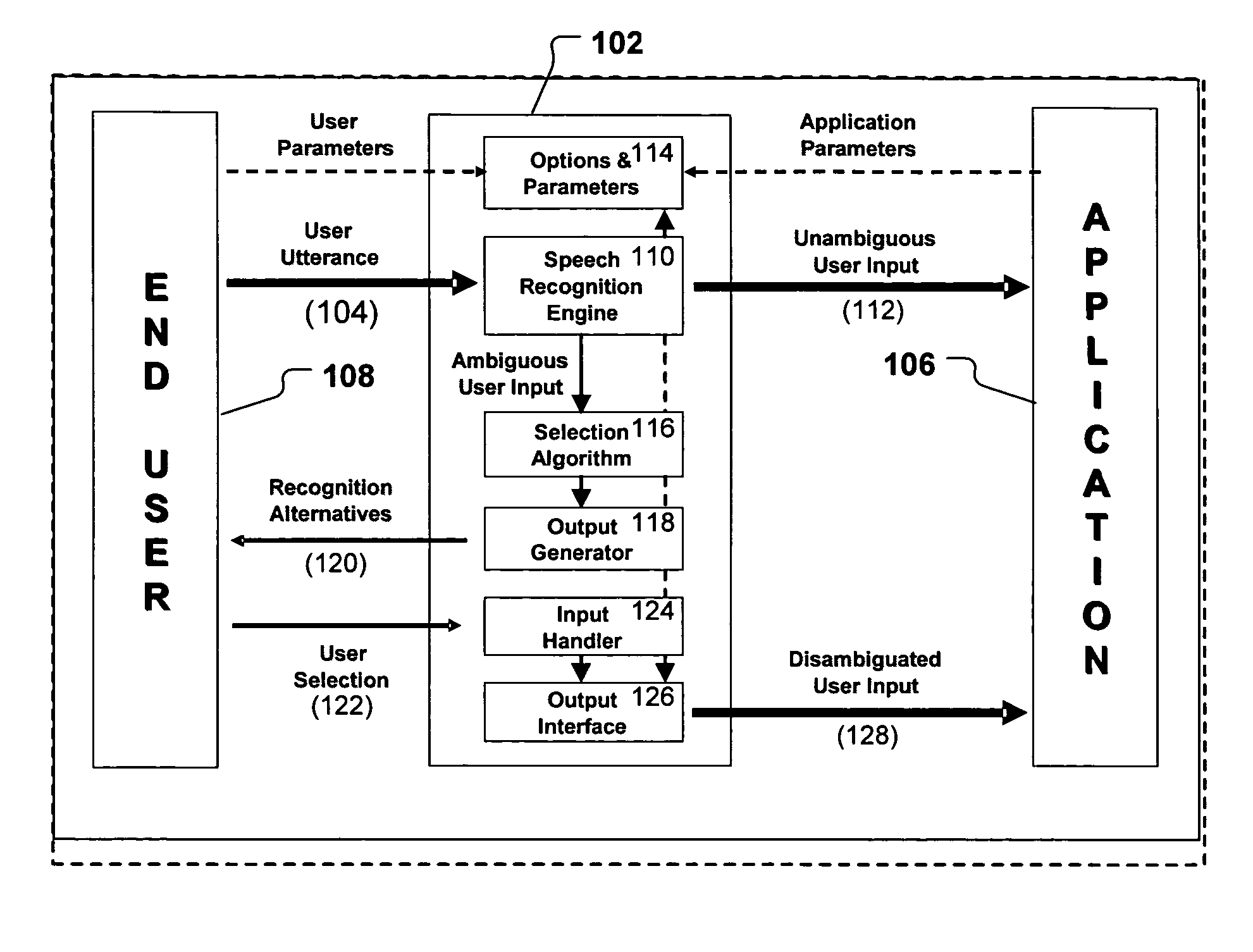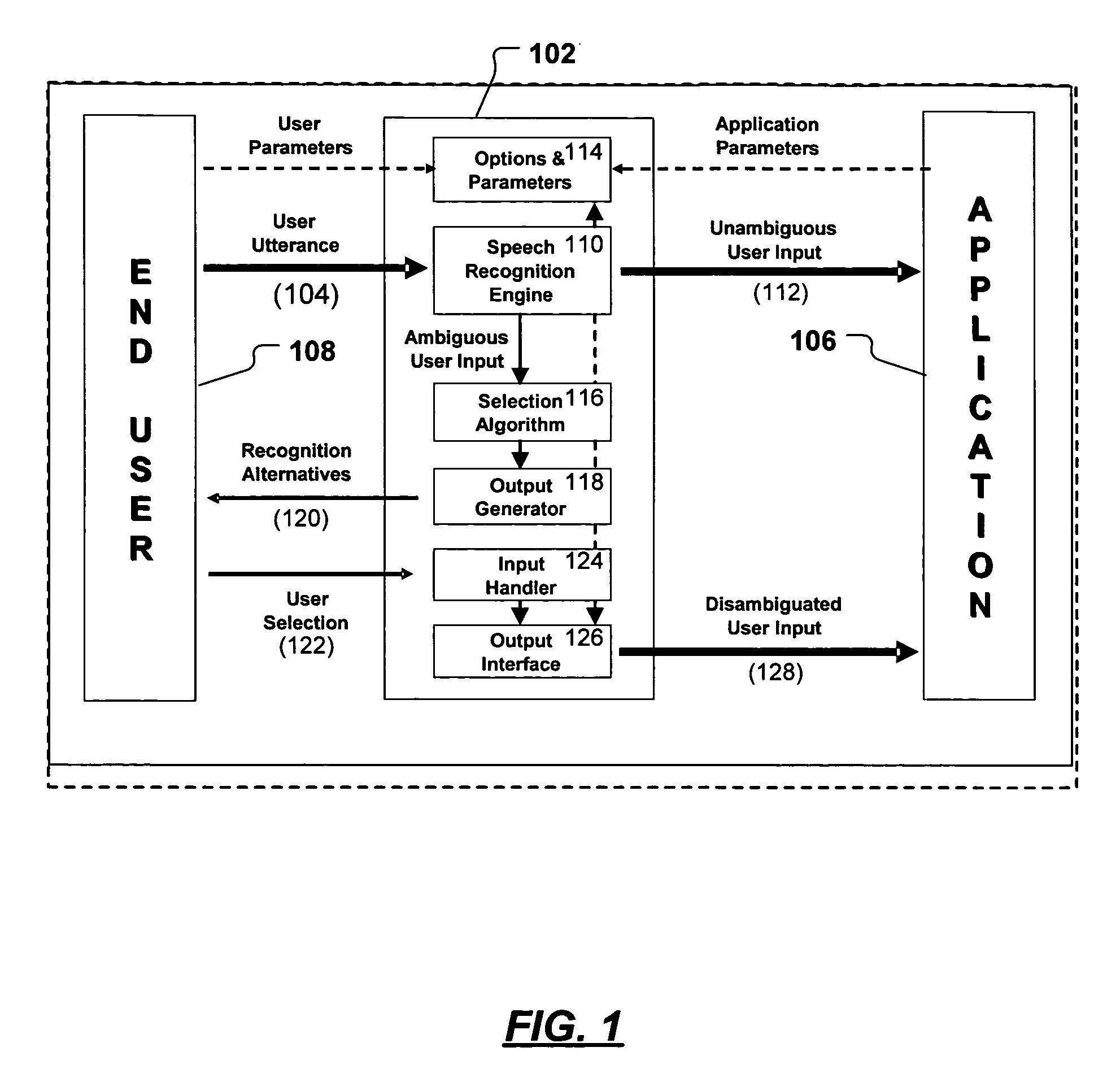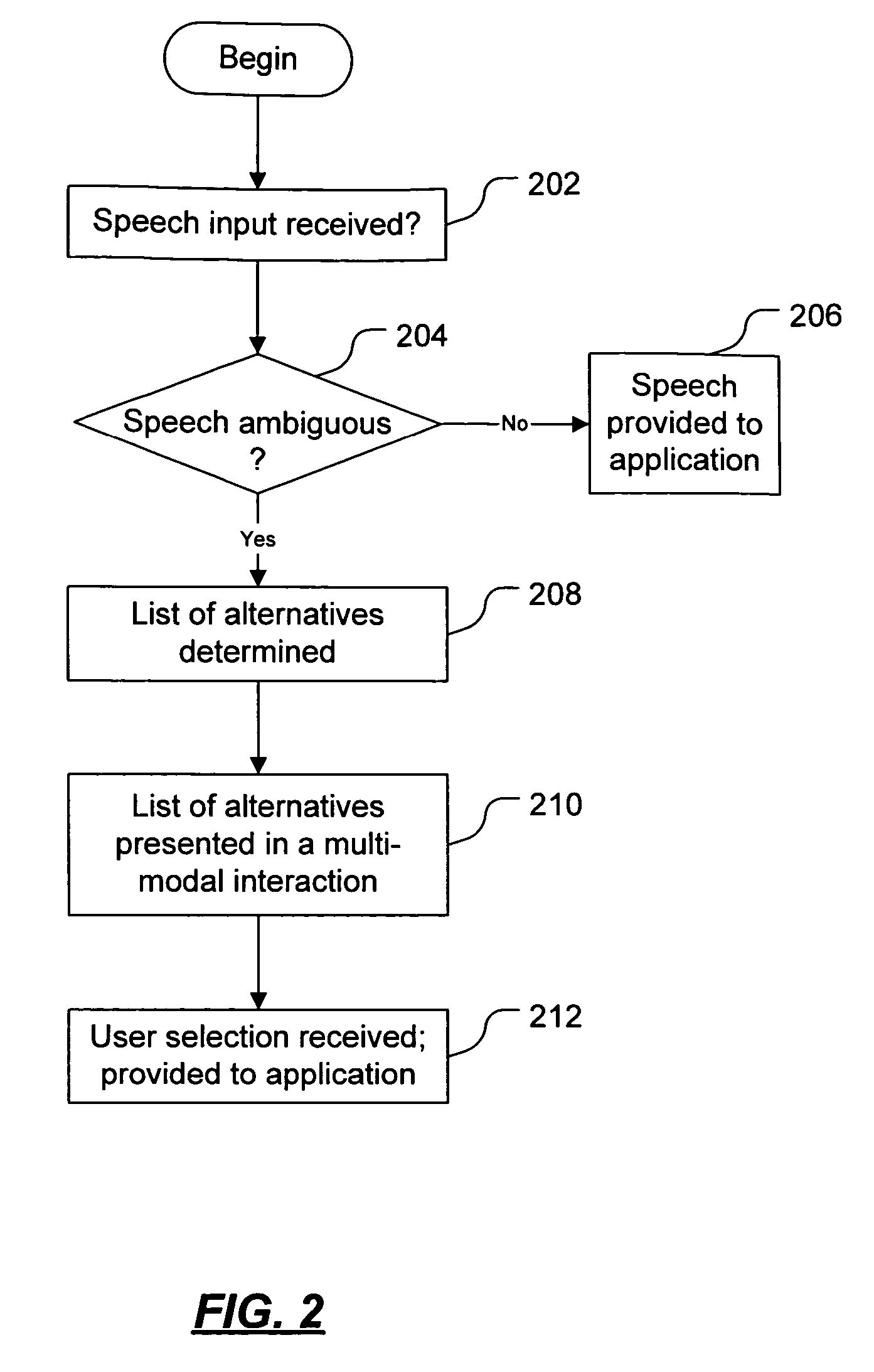Techniques for disambiguating speech input using multimodal interfaces
a multi-modal interface and speech input technology, applied in the field of multi-modal computing and other electronic devices, can solve the problems of inability to foolproof, and inability to accurately recognize user's utterances, etc., and achieve the effect of improving the speech recognition process
- Summary
- Abstract
- Description
- Claims
- Application Information
AI Technical Summary
Benefits of technology
Problems solved by technology
Method used
Image
Examples
Embodiment Construction
[0016]FIG. 1 shows an overview of an example multi-modal disambiguation mechanism (MDM) 102 in accordance with the invention, and demonstrates a context in which an MDM 102 may be used. The MDM 102 shown in FIG. 1 is used to disambiguate an end user's spoken utterances 104 so that the data represented by those utterances 104 may be used as input to application programs 106.
[0017]In the scenario, the end user 108 uses a speech interface to issue commands to the application 106. The user's utterances 104 (e.g., spoken words) are input to a speech recognition engine 110 (SRE). If the SRE recognizes the utterance with sufficient confidence (based on the settings of the SRE and the application), the result corresponding to this “unambiguous user input”112 is sent to the application 106. In the event that the SRE 110 does not recognize the user's utterance 104 with high enough confidence, the multimodal disambiguation mechanism 102 is triggered to disambiguate the user's utterances 104 an...
PUM
 Login to View More
Login to View More Abstract
Description
Claims
Application Information
 Login to View More
Login to View More - R&D
- Intellectual Property
- Life Sciences
- Materials
- Tech Scout
- Unparalleled Data Quality
- Higher Quality Content
- 60% Fewer Hallucinations
Browse by: Latest US Patents, China's latest patents, Technical Efficacy Thesaurus, Application Domain, Technology Topic, Popular Technical Reports.
© 2025 PatSnap. All rights reserved.Legal|Privacy policy|Modern Slavery Act Transparency Statement|Sitemap|About US| Contact US: help@patsnap.com



